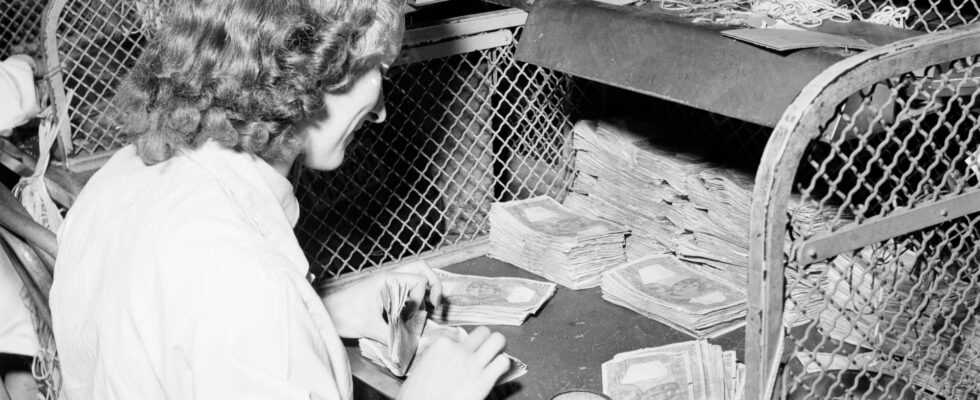Worrying inflation and a war that caused the price of raw materials to soar… It was also in 1952. France was then suffering from the chronic illnesses of the Fourth Republic. Inflation first. The relative stability regained after the maddening post-war rates is forgotten. The year 1951 has just ended with a price increase of 17%. The state budget, which has intervened on all fronts for seven years to rebuild the country and its economy, is largely in deficit, weighed down by military spending in Indochina. Aggravated by the Korean War, the economic crisis that France is going through sweeps away the government of Edgar Faure, in place for only a month. With empty coffers in February, the President of the Council had requested an advance from the Banque de France. The response of its governor Wilfrid Baumgartner was scathing, writes Match in his number 156:
“The letter sent by the Governor of the Banque de France to the resigning President of the Council, which has the tone of a ‘remonstrance’ of the parliaments of yesteryear, was the most striking event of the crisis. The publication of these interventions by the Banque de France is extremely rare. It is not up to the Banque de France to propose reforms, but it is in its tradition to raise its great voice in times of crisis: “The French, she says today, believe themselves to be rich when they are poor. The worker like the farmer, like the industrialist and the State itself share the responsibilities of the crisis. The recovery of the country can only be done seriously. The real assets of France are common sense and courage”. These words carry the weight of a century and a half of a tradition according to which money is a sacred thing in the same way as the meter standard”.
Discover Retro Match, news through the archives of Match…
“
For the first time the lens reveals the secrets of these deep cellars where the fortune of France passes in endless circuit.
“
This unprecedented intervention by the Banque de France made this institution, nationalized after the Liberation, a real stronghold in a country in the throes of instability. The opportunity for Paris Match to produce behind the scenes of the fortress this great report, signed Philippe de Baleine and André Lacaze, with Walter Carone photos:
“Behind its armored doors, its self-closing gates and its inviolable safes, it erects a final obstacle to the temptations of ease. It is in this bastion of French confidence that Paris-Match was exceptionally able to penetrate. For the first time the lens reveals the secrets of these deep cellars where the fortune of France passes in endless circuit.
Antoine Pinay, future Minister of Finance for De Gaulle in 1958 and man of the “new franc”, became President of the Council on March 8, 1952 and successfully fought against inflation, in particular thanks to the famous loan that bears his name. His cabinet will last nine months, before being swept away by this other evil of the IVth century, government instability.
“The Banque de France, bastion of the franc” on the cover of Paris Match n°156, dated March 8, 1952.
© Paris Match
For any questions about our photos, back issues and off-series, consult our services…
